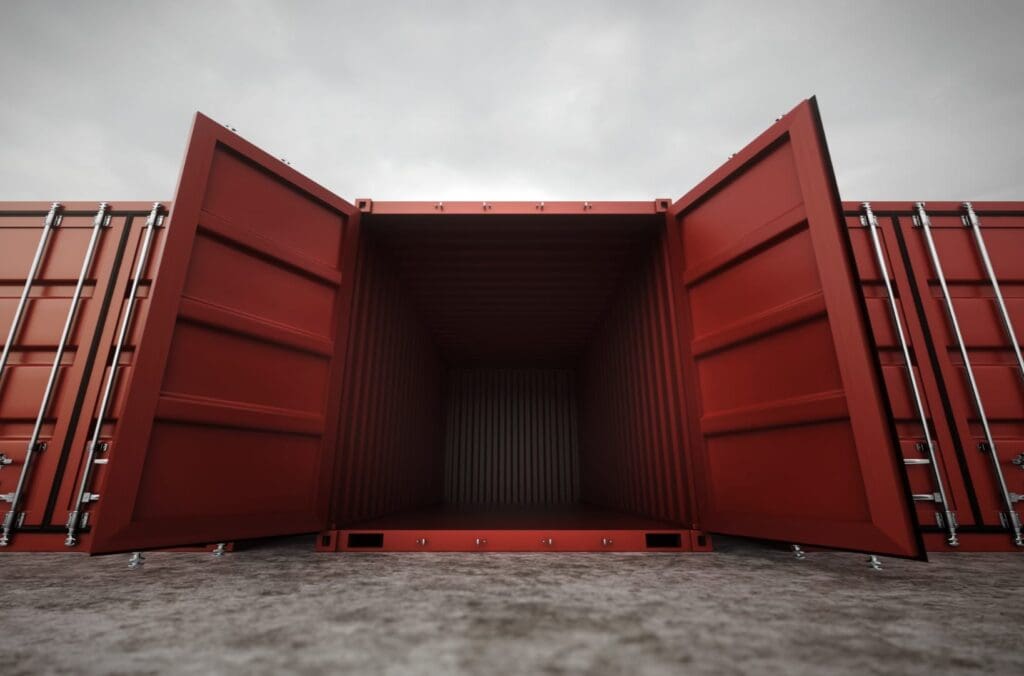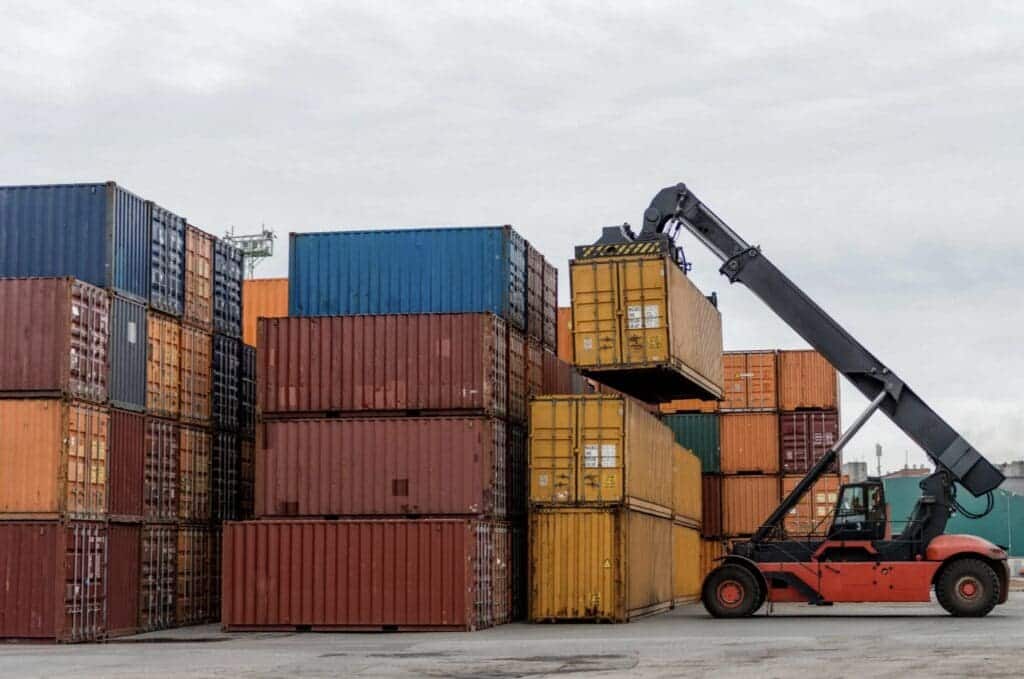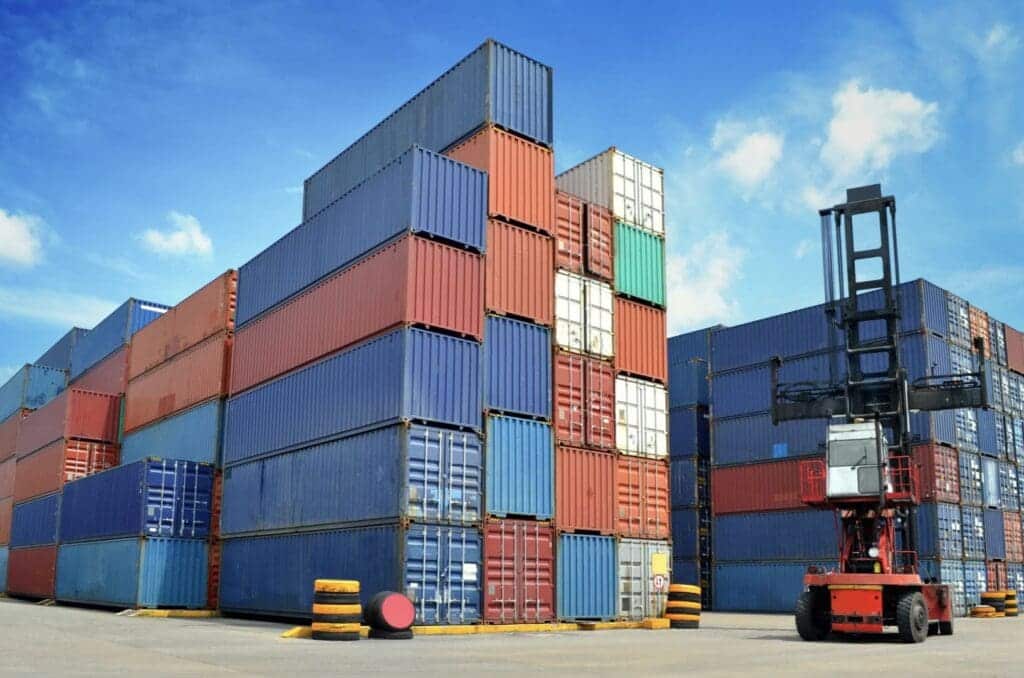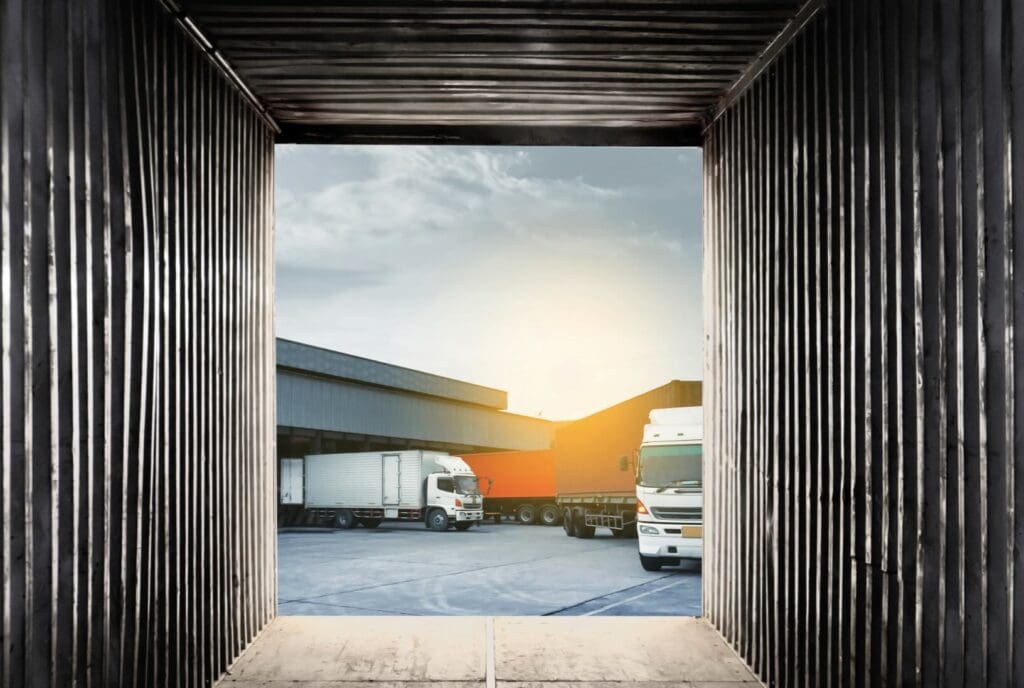As global commerce continues to expand, the efficiency of shipping cargo remains a pivotal factor in the success of businesses worldwide. The art of loading a shipping container is a nuanced process that requires careful planning, technical skill, and strategic insight. Mastering this art not only ensures the safety and integrity of the cargo but also optimizes the cost-effective use of space, which is at a premium in our interconnected economy.
This exploration into the world of container loading begins with the pressing need to optimize space—an endeavor that demands a meticulous approach to packing and an innovative mindset. What follows will uncover the essential techniques, regulations, and technological advancements central to transforming loading challenges into seamless and compliant operations.
Table of Contents
- Optimizing Space in a Shipping Container
- Ensuring Container Load Stability
- Complying with Shipping Regulations
- Maximizing Container Efficiency: The Impact of Adhering to Shipping Regulations and Standards
- Understanding the Impact on Safety and Compliance
- Cargo Integrity and the Bottom Line – A Symbiotic Relationship
- The Ripple Effect of Efficiency – A Symphony of Synchronization
- Forging Industry Trust – A Seal of Reliability
- Leveraging Technology for Efficient Loading
- Harnessing the Power of Technology in Shipping Container Loading: A Pioneering Approach
- Advanced Scanning and Imaging for Precision Placement
- Automation: The Robotic Workforce
- Real-time Tracking and IoT Innovations
- Augmented Reality: A New Dimension in Loading
- Artificial Intelligence: The Brains Behind the Operation
- Blockchain: A Trustworthy Ledger
- Final Vehicle for Transformation: Collaboration
- Listen To Our Podcast About How Can You Master the Art of Container Loading? Below or By clicking here.
- Related Content
Optimizing Space in a Shipping Container
Maximizing Shipping Container Space: The Entrepreneur’s Guide to Efficiency
In the high-stakes game of shipping and logistics, mastering the art of space optimization in shipping containers isn’t just a smart move—it’s pivotal for cost efficiency and competitive edge. Here’s an entrepreneur’s playbook for unlocking the full potential of container space, ensuring every cubic foot is leveraged to its utmost.
- Embrace Technology: Container Loading Software
- Standardize and Modularize: The Power of Uniformity
- Go Vertical: The Sky’s the Limit
- Training: A Skilled Team is a Successful Team
- Continuous Improvement: Analyze, Adapt, and Advance
- Think Inside the Box: Customization Is Key
- Consolidation Services: Synergy in Shipping
- Lighter Loads and Material Mastery: A Balance of Brawn and Brains
- Flexibility and the Rolling Container Strategy
- Space-Saving Products: Fold, Compress, Expand
Deploy state-of-the-art loading software to take the guesswork out of arranging cargo. Leveraging algorithms and 3D planning, these tools optimize placement based on weight distribution and item fragility, skyrocketing your efficiency and reducing the risk of damage. Think of it as a game of Tetris where every perfectly placed block slashes costs and boosts profits.
Invest in standardized crates and pallets to make stacking a breeze. This modular approach transforms chaos into order, simplifying loading and unloading while maximizing space usage. Remember, consistency is king in the high-speed world of logistics.
Maximize vertical space by stacking goods high—but with caution. Balancing the need for density with safety and stability is an essential skill. Don’t shy away from using stacking cones and other tools that allow for secure stacking without compromising on the integrity of your cargo.
Your staff is your most valuable asset. Providing comprehensive training on loading techniques and best practices equips them to optimize every load. Encourage a culture of continuous improvement where everyone’s focused on utilizing every inch of container space.
Post-shipment evaluations can unveil a trove of insights. Analyze each load for wasted space and learn from the patterns. Adapt your methods based on data-driven decisions, and you’ll be on a steady trajectory toward space usage perfection.
Customizing interiors with specialized racks or shelving can multiply your container’s utility, especially for atypical cargo. It’s an investment, but nothing screams efficiency like bespoke solutions.
A savvy entrepreneur knows the value of collaboration. Using freight consolidation services can bundle your goods with others, saving space and cost. What’s more? This fluidity can spark connections, networking avenues, and unexpected business opportunities.
Use lightweight packaging materials that don’t sacrifice protection for mass. It’s a balancing act that requires a shrewd understanding of materials and their properties, aligning sturdiness with efficiency.
A dynamic approach to container loading involves a ‘rolling strategy,’ where container space is booked and utilized with fluctuating inventory levels. It’s a flex-and-flow method that sits well with the fast-paced unpredictability of the business sphere.
Invest in space-saving products that can be folded, compressed, or expanded. This adaptability serves dual functions: it fosters more effortless loading and appeals to end-users keen on the convenience and innovation of such designs.
In the grand chessboard of shipping, space optimization is your queen, flexing agility and power with every move. It’s not so much about working harder but more innovative—using every tool, technique, and resource to ensure that you’re always ahead in logistics. For entrepreneurs who gaze at shipping containers and see the innovation potential, the journey toward optimizing every square inch is both the challenge and the reward. No parting summaries are needed—action speaks louder than words, and the next move is yours.

Ensuring Container Load Stability
Harnessing the Elements: Weatherproofing and Humidity Control
Controlling the environment is crucial in securing the load stability within a shipping container. It is imperative to maintain not just the correct weight distribution but also to ensure the products are safeguarded against weather-related challenges. As every seasoned entrepreneur knows, the forces of nature can wreak havoc on even the most meticulously planned shipments. Weatherproofing containers and incorporating humidity control mechanisms are non-negotiable aspects to ensure the integrity of the cargo remains unscathed throughout its journey.
Empower with Padding and Dunnage: The Cushion Against Chaos
In the high-stakes game of shipping and transportation, overlooking the necessity of padding and dunnage is akin to gambling with fortunes. Dunnage—a term for the materials used to protect and secure cargo—is the unsung hero in maintaining load stability. The strategic placement of airbags, foam, and other cushioning materials absorb shocks, reduce movement, and minimize the risk of damage, making it pivotal for delivering goods in pristine condition. Leveraging this layer of security keeps commodities in place and acts as a buffer against the unpredictable jolts of transit.
Lockdown with Lashing: The Tethers that Bind
Navigating the oceans of maritime shipping requires a reliable mooring to keep cargoes from drifting amid turbulent seas. Lashing, the process of binding goods together and anchoring them to the container, is a non-negotiable safeguard. It’s about crafting a web of security, using cords, straps, and chains, that holds the freight steadfast no matter how choppy the journey gets. Competent lashing is the linchpin of load stability; it separates a harmonious voyage from a chaotic one. To forego it is not a gamble worth taking.
Interlocking: Crafting a Coherent Cargo
The conceptual strategy of interlocking is closely linked to the physical restraints of lashing. It’s a simple idea: aligning products in a way that they naturally support each other, like a 3D puzzle meticulously assembled for peak performance. Interlocking ensures that each item, regardless of shape or size, becomes a piece of a larger, stable structure that resists motion and pressure from all axes. It is the embodiment of strategic thinking made tangible in the placement of cargo.
Seal the Deal with Proper Container Seals
Finally, one cannot overlook the fundamental necessity of secure container seals. They serve a dual purpose: they keep the elements at bay and maintain a tamper-evident barrier to protect against unauthorized access. The importance of using high-quality seals that can endure the rigors of transport cannot be overstated. In the dynamic theater of global commerce, this is the definitive mark of a shipment’s integrity and the sender’s commitment to cargo security.
As we map the landscape of load stability within shipping containers, it is clear that several key practices stand as non-negotiable pillars. These practices are the framework of a reliable transport strategy—a protocol ensuring that satisfaction reigns supreme when the container’s doors are finally flung open at the destination. Goods stand tall, unscathed, and ready for the market. The world of shipping waits for no one, and in this ever-advancing industry, those who prize precision over approximation will navigate to success.

Complying with Shipping Regulations
Maximizing Container Efficiency: The Impact of Adhering to Shipping Regulations and Standards
In the bustling realm of global trade, shipping containers function as the lifeblood, ensuring that products traverse oceans and continents efficiently and safely. At the heart of this intricate dance is the paramount need to adhere strictly to shipping regulations and standards—a mandate not only for legal compliance but also for safeguarding the cargo, the vessel, and the crew.
Picture a world where each container is a cog in a well-oiled machine, where meticulous loading protocols harmonize with exacting standards to uphold a flawless operation. This is not just the aspiration—it’s the standard. The crux lies in heeding critical guidelines, which stand as cornerstone practices shaping the success of containerized freight.
Understanding the Impact on Safety and Compliance
Safety on the high seas is non-negotiable. Proper adherence to rules ensures that containers are steadfast, mitigating risks like tipping, shifting, and loss overboard, phenomena that can spell disaster in the deep blue. As vessels plow through tempestuous weather, the security of well-loaded containers stands as a bulwark against the perils posed by the wrath of Poseidon.
In tandem, compliance curtails the likelihood of hefty fines or delayed shipments, which can befall those who flout the rules. It’s about more than just avoiding infractions—it’s about pledging allegiance to best practices that preserve the integrity of cargo and containers.
Cargo Integrity and the Bottom Line – A Symbiotic Relationship
Ensuring that merchandise arrives in pristine condition is more than a value proposition—it’s the lifeline for businesses that stake their reputation on the merchandise they ferry across the globe. Adherence to protocols, therefore, influences whether a shipment is a boon or a bane to the bottom line.
When containers are loaded with precision, aligning with the stringent criteria loyally, the odds of damage diminish exponentially. This vigilance is profitable savvy incarnate—it keeps cargo claims at bay and fortifies customer trust, fostering a cycle of satisfaction and repeat business that is the envy of competitors.
The Ripple Effect of Efficiency – A Symphony of Synchronization
In the rhythm of container orchestration, efficiency is the melody that resonates. Abiding by shipping standards equates to more than an orderly arrangement—the synchronization of cargo streamlines loading and unloading, akin to a ballet of boxes and pallets. This efficiency isn’t just about time—it translates directly into cost savings, environmental stewardship through reduced emissions, and an operational tempo that sets the pace in a fast-moving market.
The butterfly effect of a container loaded by the book is profound—the vessel can lower fuel consumption, the port can expedite throughput, and the final destination receives goods with the awe-inspiring punctuality that defines modern commerce.
Forging Industry Trust – A Seal of Reliability
When shipping partners can bank on a business’s unfaltering adherence to standards, it cements an impenetrable bond of trust. This trust is the currency of choice in an industry that hinges on reliability. A reputation for meticulous compliance with loading regulations is a badge worn with pride, a testament to a commitment to excellence that draws clients and partners closer in the mutual pursuit of perfection.
Wrapping up the ark of cargo with care, discernment, and unwavering conformity to loading regulations isn’t just about ticking off checkboxes in a ledger. It’s about engraving a legacy in the annals of shipping, where each container’s journey from port to port is a chapter authored with hard-earned expertise and indomitable dedication to the standards that hold the industry to a gold standard.
It solidifies a place as a paragon of cargo shipping, where every crate, every box, and every shipping document sings the same refrain: Here lies the triumph of diligence, the safeguarding of assets, and the seamless flow of trade that moves the world.

Leveraging Technology for Efficient Loading
Harnessing the Power of Technology in Shipping Container Loading: A Pioneering Approach
Let’s delve into how technology can revolutionize the shipping container loading process, streamlining operations and maximizing efficiency in logistic chains. As an entrepreneur deeply entrenched in business and finance trends, I realize that innovation is not just about creating new products but optimizing existing operations. Shipping, a cornerstone of global trade, is ripe for a tech makeover.
Advanced Scanning and Imaging for Precision Placement
Visualizing a container’s load with precision is paramount. Incorporating advanced scanning and imaging techniques enables precise mapping of a container’s interior. This technology, akin to a blueprint for packing, ensures every inch of space is accounted for, reducing wasted volume and minimizing shifting during transport—a vital advancement for load optimization.
Automation: The Robotic Workforce
Robotics has transformed industries, and shipping is no exception. An automated workforce dedicated to loading containers can work tirelessly, reducing human error and increasing safety. Automated Guided Vehicles (AGVs) and robotic arms are designed to handle the heavy lifting and meticulous placement of cargo, ensuring consistency in container packing.
Real-time Tracking and IoT Innovations
The Internet of Things (IoT) provides a real-time window into the status of container loading operations via sensors and trackers. These devices furnish valuable data, allowing for adjustments on the fly and enhanced inventory management. Real-time tracking isn’t just about visibility; it brings actionable insights that pave the way for seamless loading workflows.
Augmented Reality: A New Dimension in Loading
Augmented reality (AR) has transcended gaming, entering the shipping realm. By overlaying digital information onto the real world, AR assists loaders in visualizing the most effective placement of items within a container, much like a high-stakes game of Tetris, but with the bonus of ensuring maximum load capacity and securement.
Artificial Intelligence: The Brains Behind the Operation
AI is the captain of modernization in shipping. With the ability to analyze vast amounts of data, AI predicts the most efficient loading patterns and anticipates potential issues before they arise. This pre-emptive approach leads to improved load management and a significant uptick in productivity—a true game-changer for the shipping industry.
Blockchain: A Trustworthy Ledger
Blockchain’s secure and immutable ledger system revolutionizes how shipping transactions are recorded, verified, and tracked. By applying blockchain technology to the container loading process, integrity and transparency are ensured, building trust across the supply chain and reducing the risk of fraud and errors—an invaluable asset in the logistics playbook.

Final Vehicle for Transformation: Collaboration
To truly transform shipping container loading, embracing a culture of collaboration is crucial. Sharing data and solutions across companies and borders propels the entire industry towards a future where shipping is more secure, reliable, and efficient—benefiting everyone in the network, from producers to end-consumers.
In the fast-paced business world, those in charge of adopting innovative technologies in shipping container loading will find themselves at the helm of an industry revolution. Remember, the most potent transformations often happen from the inside out—the inner container revolution leads to outer economic evolution. The shipping world awaits those ready to pioneer this modern age of logistics.
Listen To Our Podcast About How Can You Master the Art of Container Loading?
Below or By clicking here.

Find out more about how Mondoro can help you create, develop, and manufacture excellent home decor and furniture products – don’t hesitate to contact me, Anita. Check out my email by clicking here or become a part of our community and join our newsletter by clicking here.
Mondoro gives out a FREE Lookbook to anyone interested. You can receive a copy of our latest Lookbook by clicking here.
Listen to our Podcast called Global Trade Gal. You can find it on all major podcast platforms. Try out to listen to one of our podcasts by clicking here.
Subscribe to our Mondoro Company Limited YouTube Channel filled with great videos and information by clicking here.
Related Content
Don’t Confuse Activity With Productivity & Other Myths
Being busy or having a lot of activities and things to do is not the same thing as productivity. Productivity is when you do those activities and things that help you focus on the company’s growth. Busyness or being busy is not the same thing as being productive.
You can discover more by reading Don’t Confuse Activity With Productivity & Other Myths by clicking here.
What Is Quietly Quitting? 8 Reasons Why It Is a Bad Idea
Quietly quitting is when workers decide to do no more than what is required. They decide that they will do the bare minimum. Quietly quitting started in China and was known as “lying down.” We do not believe “quietly quitting” is a good idea since it hurts the employee or the employer – both get hurt by this behavior.
You can discover more by reading What Is Quietly Quitting? 8 Reasons Why It Is a Bad Idea by clicking here.
8 Reasons Productivity Makes You Happy
There are many ways that productivity can help to make you happy. Studies have shown that some of the most productive people are also the most content. Productive people accomplish things, learn new things, achieve goals, and do the other things in life that help ensure they are effective and happy. The good news is that productivity can help to make you happy.
By clicking here, you can discover more by reading 8 Reasons Productivity Makes You Happy.

